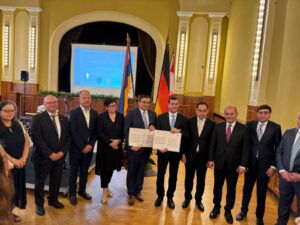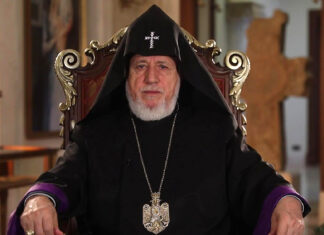By Danny Donabedian
Harut Sassounian is an established, rather well-known political analyst and critic of Armenia’s current leadership and administration. He has claimed, on numerous occasions, to offer fair and balanced accounts of noteworthy and relevant events that pertain to or impact Armenia’s domestic, economic, and political spheres. While that meticulous judiciousness may occasionally be the case, in his recent article, “Armenia’s Leaders Ignored Investor’s Offer to Build Military Vehicles Before the War,” that could not be farther from the truth.
In the article Sassounian attempts to prove two points: 1) Armenian Prime Minister Nikol Pashinyan and his administration are incompetent and uncaring and 2) they inspire neither the investors nor investments needed to bolstering Armenia’s economic prospects and future. To vindicate his politically-motivated opinion, Sassounian claims the current leaders completely and utterly botched a lucrative business opportunity with an Armenian that would greatly improve the economic lot of the country. Despite his excellent command of English diction, Sassounian’s article is filled with numerous key omissions that would otherwise discredit, if not outright refute, the narrative he presents to his readers. More dangerous, however, are the falsehoods weaved throughout the piece, as the example of Artak Tovmasyan Harut introduces is grossly misrepresented. In fact, there is more to the story then what Sassounian lets on and Sassounian goes so far as to provide incorrect information to his readers. Prior to that, however, it would do readers well to briefly skim his article (Mirror-Spectator, June 12, p. 19) in order to do his words justice. His column has also been reproduced online elsewhere (here, here and here).
Firstly, let us speak of the STREIT Group and its history. Contrary to Mr. Sassounian’s claims, it is not just technically a Canadian company that merely has minor branches or smaller offices in other countries. The company had its humble beginnings in Ontario, Canada, starting as a small business working out of the small garage of a Russian immigrant and former police officer named Guerman Goutorov. The primary development and growth of the company followed Goutorov’s and STREIT’s move to the United Arab Emirates (UAE), where according to the US department of commerce and the STREIT’s own website, its head office and central headquarters were established and it became based out of. STREIT does have a branch in Canada, but it is foremost Emirati corporation whose growth was dependent on the funding of its Emirati components. In addition to its headquarters being in the UAE, most of their armored vehicles are also produced at that location. Given Canada’s positive reputation in the Armenian community, perhaps Mr. Sassounian felt that his readers would care more if Armenia wasted an opportunity to benefit from a Canadian corporation, rather than one stemming from the UAE. Giving the STREIT group the title of a Canadian corporation gives more credence to the magnitude of the alleged notion of a lost investment. While not exactly harmful, it is a slight manipulation of the facts that should have been corrected by stating it is an Emirati corporation with a branch in Canada whose CEO is a Canadian citizen.
The second folly is the overestimation and aggrandization of the military and economic value of the STREIT group. Harut Sassounian claims that the vehicles produced by STREIT carry critical national security implications, but this is left baseless as he fails to prove what precise military use, if any, and capacity STREIT’s armored vehicles offer to the armed forces of Armenia. Without proof that these vehicles are superior to or as effective to the ones already present in the arsenal of the country’s armed forces, one can instead conclude the STREIT vehicles offer no known actual military advantage compared to the armored vehicles Armenia already owns, purchases, and operates. Moreover, Mr. Sassounian ignores potential structural shortcomings and assumes the flawlessness of the STREIT vehicles when he states: “These armored military vehicles would have been very useful during last year’s war with Azerbaijan, saving the lives of countless Armenian soldiers.” Like many other armchair general pundits, Sassounian fails to conduct a sufficient analysis of the capacities of STREIT’s military hardware to support that conclusion.
The STREIT vehicle line consists of Mine Resistant Ambush Protected vehicles (MRAPs), armored personnel carriers (APCs), sports utility trucks (SUTs), and light combat tactical all-terrain vehicles (LATVs). The MRAP STREIT offers is the STREIT Group Typhoon, which was initially designed to resist improvised explosive devices (IEDs) encountered during the Iraq war. It was later discontinued due to structural weaknesses and the tendency to lose control and induce casualties to passengers, especially in hilly or uneven terrain, to which Nagorno-Karabakh is no stranger. MRAP vehicles were initially constructed for the purpose of aiding troops in offensive operations whereby soldiers had to enter mined enemy territory, and thus would prove less handy to a war focused on territorial defense of Artsakh, where intention to expand and grab more land is absent.








